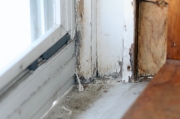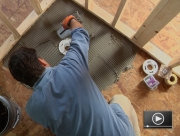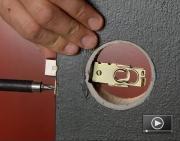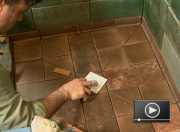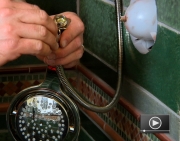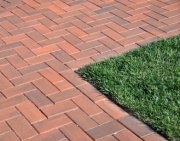- Error
{Re}habitat
Learn how adaptive reuse and upcycling can add hip design to your home, apartment, or yard with the Go Green channel's {Re}habitat series. Follow host Rachael Ranney as she shows you how to repurpose salvaged and found materials, adding fun and function to your space without breaking your budget.

If you're unfamiliar with the title of this article, or this important subject matter, don't feel bad – you're not alone. Confusion and a lack of awareness is the rule, rather than the exception, when it comes to the federal Environmental Protection Agency's (EPA’s) new Renovation, Repair, and Painting (RRP) rule, which totally redefines the way much of home remodeling is conducted. It centers on the control of dust from lead paint created from during RRP, not the elimination of the lead itself. The RRP rule is monumental – in its complexity, in the nature of the changes, and in the cost involved in compliance. Here's the EPA's explanation in a nutshell: “Under the rule, beginning April 22, 2010, contractors performing renovation, repair, and painting projects that disturb lead-based paint in homes, child care facilities, and schools built before 1978 must be certified and must follow specific work practices to prevent lead contamination.”
Basic tiling skills can be very useful in many home improvement projects, but some tiling projects can prove daunting for even experienced DIY'ers. Installing tile for a custom shower is one of those projects. That has often meant leaving the job of custom showers to the pros – until now. Now there are new preformed bases on the market that allow a “do-it-yourselfer” with basic tile skills and tools to install a custom shower. Join the At Home channel host, Jeff Wilson, for a tutorial on installing a tileable shower basin in a custom bathroom.
A homeowner might want to replace old door hardware for many reasons -- security, accessibility, style, or repair. Replacing door hardware only requires a simple set of skills and tools, but new door hardware can make a big difference in the way a door looks and works. Join the At Home channel’s host, Jeff Wilson, for a quick demonstration of how to install new door hardware.
Effective air sealing comes with workmanship. No matter what brand of housewrap you choose, you will be wasting your money unless you install it carefully. Getting the installation right is not hard, but it requires a basic understanding of how housewrap works. Detailed installation instructions can be found on manufacturers’ Web sites and often at the lumberyard or home center where housewrap is purchased.
Ceramic tile is an ideal choice for walls and floors in any bathroom. It’s durable, impervious to water, and comes in an almost limitless selection of colors and styles. Tiling a custom bathroom with your own hands is a rewarding project for an experienced do-it-yourselfer. Join the At Home channel’s host, Jeff Wilson, as he offers guidance on installing wall and floor tile in the second installment of Buildipedia's custom bathroom series.
One of the final steps in completing a custom shower project is selecting and installing the shower fixtures. While the task of selecting a shower fixture from the wide variety of styles can be challenging, installing the fixture is a simple job. With basic plumbing tools and skills, any do-it-yourselfer can install a shower fixture. Join the At Home channel’s host, Jeff Wilson, for a tutorial on installing a handheld shower fixture in the continuation of our custom bathroom series.
If your interior doors are severely stuck, rubbing, scratched, have holes, damaged beyond repair, or just don’t fit with your style, installing new prehung doors will sharpen the appearance of any room in your home and provide easy, daily operation. Installing a prehung door after removing an existing door isn't as difficult as you might think. With some patience and a little know-how, installing a prehung interior door is a project any DIY'er can do.
Tired of eating at the picnic table on the lawn but not interested in maintaining a wood deck? Look to make a lasting impression in your backyard by installing a paver patio. Paver patios are aesthetically pleasing and are relatively low-maintenance. If you hire a contractor, you can expect to pay $15–$20 a square foot, depending on where you live and what type of paver you have selected. If you are able to set aside some time and are willing to perform the work on your own, you could save 40%–60% by doing it yourself. Let's get started!
